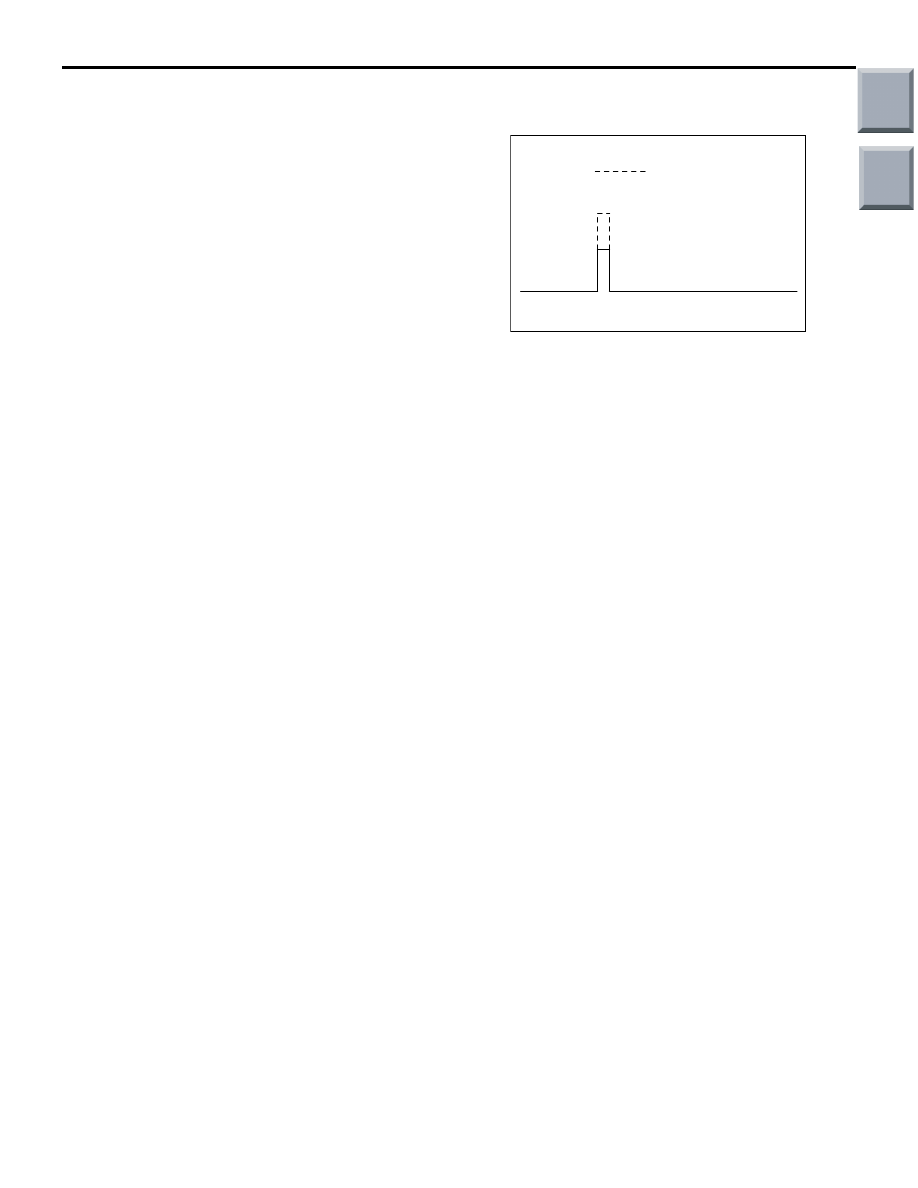Mitsubishi Colt Ralliart. Manual - part 758

TROUBLESHOOTING
MULTIPORT FUEL INJECTION (MPI) <4G1>
13B-357
Description of Wave Pattern
• Condition of power transistor being in ON:
Condition in which the power transistor is turned ON
and power is applied to the ignition coil primary
side (dwell section). The time for the passage of
power becomes long when the battery voltage is
low, and becomes short when the battery voltage
is high. Thus, control is exercised so that the pri-
mary current becomes constant when ignition
occurs.
• Condition of power transistor being in OFF:
Condition in which the power transistor is turned OFF
and no power transistor drive signal is output
from the engine-ECU.
Wave Pattern Observation Points
• Check that the power transistor control signal
(ignition timing) advances when the engine speed
increases.
Example of Abnormal Wave Patterns
Wave pattern characteristics
Voltage is low.
Cause of problem
Open-circuit in ignition primary circuit
AK203246
Normal wave pattern
AD
Main
Index
Group
TOC